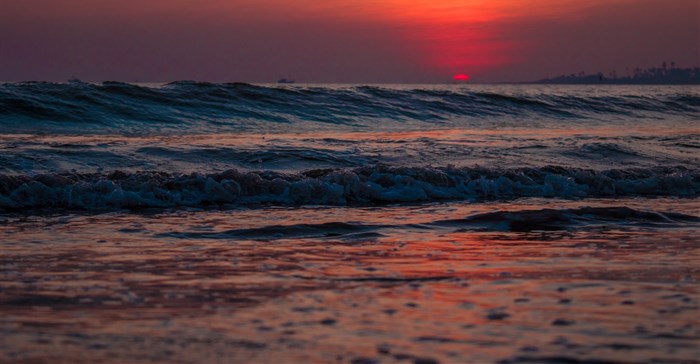African countries aren't doing enough to prepare for rising sea levels

Some of the more optimistic global climate change projections, which consider a reduction in greenhouse gas emissions, indicate that sea levels could rise to 0.40m by 2100. But if we don’t reduce emissions enough, sea levels could rise to 0.78m by 2100. This scenario could pan out if countries don’t reduce their carbon emissions. High emissions mean increasing global temperatures, which causes seawater to expand and ice over land to melt – both of which can cause a rise in sea level.
Sea level rise is inevitable. Some countries are already considering – or taking – action. Many parts of the African coastline are an unfortunate exception. These areas are at risk of being left behind in the adaption trend.
I found this through my own research in which I assessed the impact of sea level rise, including damage costs and the number of people that could be flooded in the future around the African coast.
All coastal nations will be affected – that’s a total of 50 African countries and surrounding islands. But those that are very low-lying risk being hit the hardest. They face increased flooding, erosion, groundwater salinisation on agricultural land, as well as reduced tourism and economic activity.
Despite these risks, limited action is being taken. Many African countries have more immediate issues and are understandably less concerned by something that may not affect them for many decades.
Huge investment
In our research, we found that the impact of rising sea levels could be reduced by adapting the coastline and infrastructure. This includes building dikes to reduce flooding, and adding sand to beaches to reduce erosion. This could cut damage costs in half by 2100.
But these measures require substantial investment. It would require billions of dollars to provide better protection today. Costs would continue to increase in the future as sea levels rise and populations and cities grow. The number of people affected is projected to be high, unless they adapt. This is particularly true in countries such as Egypt or Mozambique whose populated coastlines are low-lying or prone to storms.
But many African countries don’t have the available funds and have more immediate poverty challenges, so they need to look to international climate funds to help. Although the costs of protection are high, the costs of inaction are even greater.
Population growth
Another challenge in addressing future sea level rise is population growth.
In 2000, 54.2 million people on the continent lived in low elevation coastal zones –- typically land which is less than 10m of elevation above sea level. Experts project that by 2030, this number could have doubled to between 109 and 118 million people.
Currently, 85% of those living in low elevation coastal zones live in urban areas. Planning, particularly for urban areas where populations are expected to grow the most, is therefore needed. One reason why this is slow to happen is that there is a lack of basic local data and guidance to indicate how sea levels will rise how coasts will change, and when and what the consequences may be.
Affecting livelihoods
Managing the coast is also challenging when livelihoods depend on it.
For instance around Ghana’s capital Accra and the wider Volta delta, sand mining on the coast is common. Selling sand to the building trade is big business and provides many people with a living.
But sand is a valuable resource when it comes to protecting the environment. It stops the wave buffering the land and reduces flooding by providing a barrier between land and sea. Without sand, the effects of sea level rise would be worse.
Similarly, those living in the Nile Delta, Egypt will need to adapt to a changing coastline. One suggestion was for communities to move away from the coast. But resettlement isn’t viewed positively as it would affect people’s livelihoods.
Future planning
One city that is trying to manage its present and future sea level rise is Cape Town in South Africa.
Over a period of almost 30 years, the rate of residential and commercial developments in Cape Town doubled. Seeing problems of infrastructure loss and damage due to erosion and flooding today, the municipal government knew this would worsen as sea levels rise. As a result it was trying to establish a coastal set-back line, where development of new infrastructure is prohibited on the seaward side.
This proved difficult to develop because the threat isn’t immediately obvious, and other issues are at play. The coast provides multiple amenities and resources, and when these are not perceived to be under threat, people may not realise a “do nothing” approach may be a bigger threat overall in years to come.
Addressing sea level rise is challenging. Even basic recommendations to reduce risk are difficult to reinforce as more fundamental development, social and sustainability issues also need to be considered.
This article is republished from The Conversation under a Creative Commons license. Read the original article.![]()
Source: The Conversation Africa

The Conversation Africa is an independent source of news and views from the academic and research community. Its aim is to promote better understanding of current affairs and complex issues, and allow for a better quality of public discourse and conversation.
Go to: https://theconversation.com/africa






















